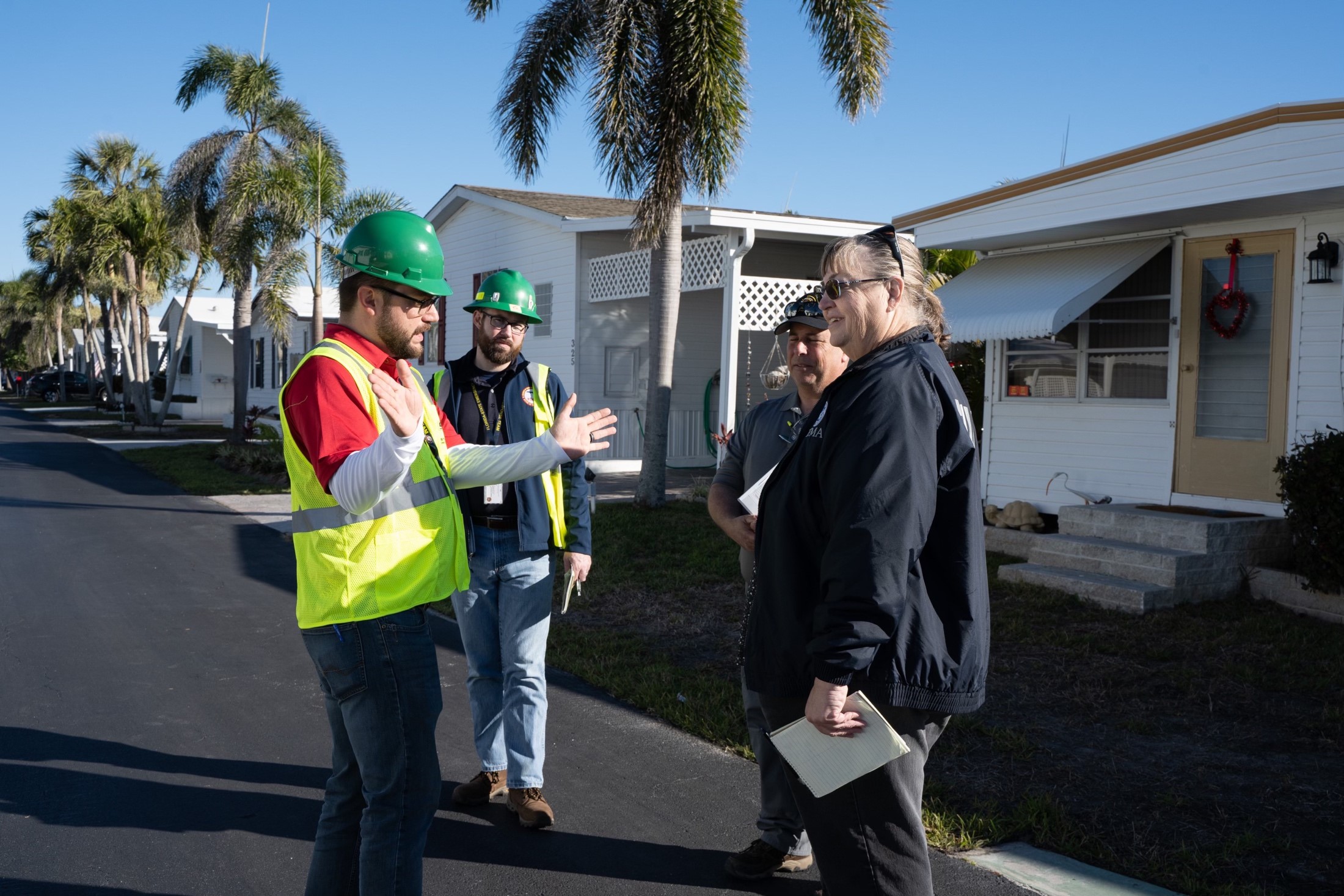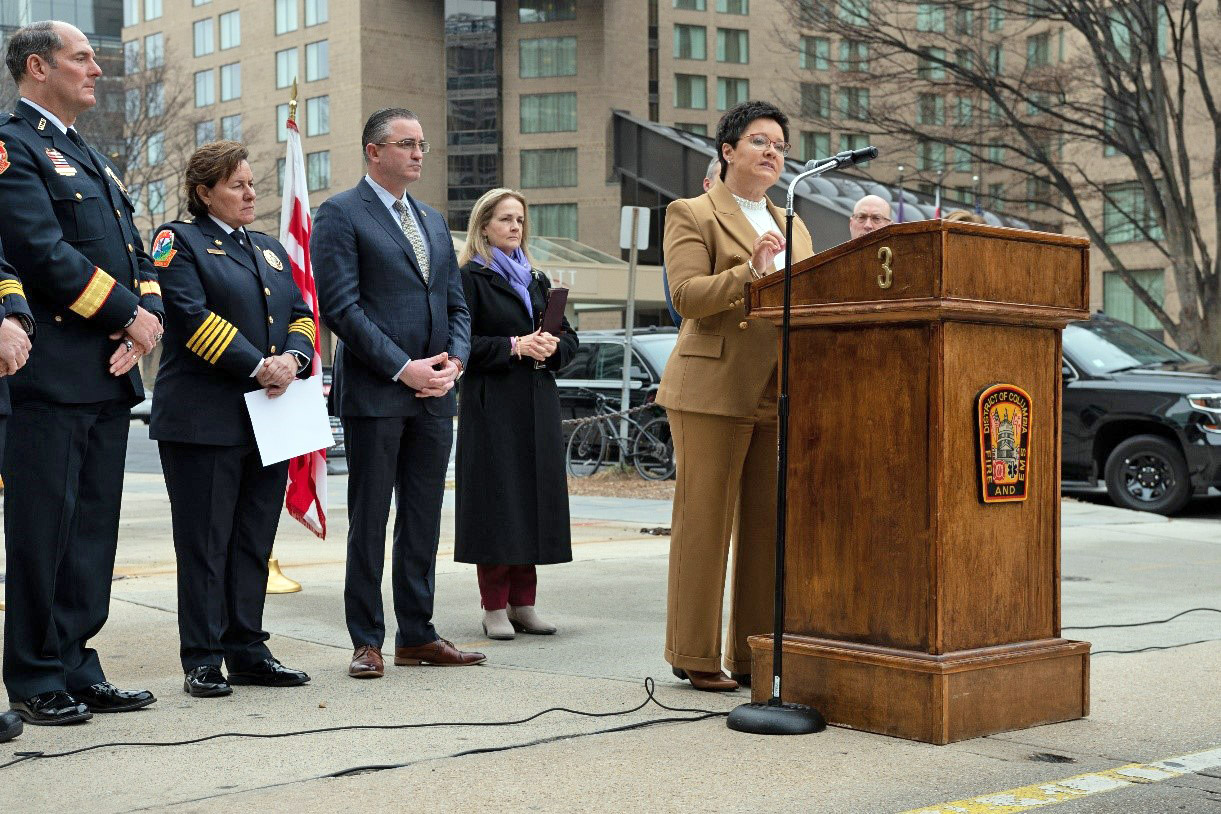Image: (March 24, 2023) The Smithsonian Institution and FEMA Co-host a Disaster Simulation for Protecting Cultural Artifacts.
Hyper-automation integrates diverse advanced technologies to automate and optimize complex Enterprise activities. Benefits of hyper-automation include the consolidation of operations, significantly reduced overheads, and enhanced overall efficiency. It leverages the power of Artificial Intelligence (AI), Machine Learning (ML), Robotic Process Automation (RPA), and other tools to automate repetitive tasks and minimize errors. Read on to discover how our expertise in platform engineering, application modernization, and AI-driven analytics can revolutionize grants management systems, streamline processes, and enable data-driven decision-making.
Potential Impact of Hyper-Automation on Grants Management

Image: (February 14, 2023) A Mitigation Assessment Team (MAT) traveled to Florida to learn about Hurricane Ian’s effects on the built environment.
In the context of grants management, hyper-automation plays a pivotal role in expediting and simplifying the grant management process. Grants management covers a wide range of processes and activities, including application review, data entry, budget tracking, and performance reporting. By automating these activities, public sector organizations can not only save valuable time and resources but also augment the precision and effectiveness of the overall process.
According to a report by Gartner, the adoption rate of structured automation in organizations is expected to increase from 20% in 2021 to 70% by 2025. This trend of automating processes for improved operational efficiency is referred to as “hyper-automation” and is the next evolutionary step in this domain.
Hyper-automation can simplify the grants management process in the following areas:
1. Intelligent Document Processing
A recent study conducted by PwC discovered that employing even basic AI-powered data extraction methods can result in a reduction of 30–40% in the time typically dedicated to such procedures by organizations. Utilizing advanced AI and Optical Character Recognition (OCR) technologies, hyper-automation enables rapid extraction, classification, and validation of data from grant applications and supporting documents. This significantly reduces manual data entry errors and accelerates the review process, demonstrating the transformative potential of automation in managing grants.
2. Streamlined Budget Tracking
Through automating the monitoring of budgets and costs, organizations can achieve considerable time and resource savings. Robotic Process Automation (RPA) can be used to automate budget development and monitoring, ensuring that organizations stay within their spending limits and don’t go overboard.
Consider a scenario where an agency has received a grant to fund a particular project. The agency is required to submit regular reports on the project’s progress and budgetary expenditures to the grantor. With the help of automation, the agency can automate the process of tracking and monitoring its budget. This can involve setting up a dynamic workflow that automatically aggregates data related to the project’s expenses and evaluates them against the financial stipulations of the grant, thereby optimizing budget management and compliance.
3. Improved Performance Reporting and Evaluation
Hyper-automation can streamline the reporting process by automatically aggregating, analyzing, and visualizing grant performance data in real time. This empowers organizations to evaluate the impact of funded projects, identify areas for improvement, and make data-driven decisions to enhance future grant-making strategies.
4. Predictive Analytics and Decision Support
By leveraging ML algorithms and data analytics, hyper-automation can generate predictive insights and recommendations to guide decision-makers in evaluating grant applications and allocating resources. This can optimize the selection process by identifying high-potential projects, avoiding possible risks, and ensuring funds are utilized effectively.
5. Compliance Monitoring and Risk Management
With the integration of AI/ML technologies, hyper-automation can continuously monitor grant recipients’ compliance with grant terms and regulatory requirements. By identifying discrepancies and potential risks early on, organizations can proactively address issues, ensuring the successful execution of funded projects.
Hyper-Automation and DHS Agencies

Image (January 13, 2023) C-SPAN: U.S. Fire Administrator Lori Moore-Merrell Announces Launch of National Fire Strategy (FEMA Photo)
A study by Deloitte suggested that adopting cognitive technologies like artificial intelligence (AI) has the potential to streamline U.S. federal government office operations, potentially saving up to 25% of work hours and cutting costs by as much as $41 billion.
Streamlining and improving business performance for DHS agencies such as the Federal Emergency Management Agency (FEMA) is crucial for optimizing operational efficiency, resource allocation, and decision-making in response to natural disasters and other emergencies. By leveraging advanced AI through hyper-automation, these agencies can better optimize the grant application, review, and disbursement processes, reducing manual intervention and improving accuracy and efficiency.
Moreover, streamlining processes, such as budget monitoring and performance reporting, enables seamless communication and coordination among various stakeholders, including federal, state, local, tribal, and territorial partners, as well as non-governmental organizations and the private sector. Enhanced collaboration not only speeds up response times but also minimizes duplication of efforts and reduces administrative overhead.
Ultimately, optimizing performance using hyper-automation for agencies like FEMA is critical to safeguarding public safety, ensuring resilience in the face of emergencies, and promoting the efficient use of taxpayer dollars. Hyper-automation can simplify the grants management process, resulting in a Ready FEMA that is better prepared to serve the nation.
Real-World Example of Hyper-Automation in Grants Management
The Institute of Museum and Library Services (IMLS), an independent agency of the U.S. Federal government, provides library grants, museum grants, policy development, and research. TechSur Solutions implemented Adaptive Artificial Intelligence (AI) to deliver solutions that meet IMLS current needs and continues to grow with their evolving needs. We integrate AI technologies to drive advanced automated tasks with actionable results from core business processes to the added-value chain.
The Institute of Museum and Library Services (IMLS) First Check review process was originally performed by Program Officers going through application files and databases to validate a grants application manually, taking up to 2 weeks. TechSur’s First Check tool reviews hundreds of applications in 1-2 hours and has been implemented as the initial reviewer for grant applications. The tool automates 95% of the First Check rules which allows Program Officers to focus on validating tool’s results and performing rule checks outside of the tool’s scope. An internal website is included in the tool as a centralized space for viewing, validating, and exporting First Check results.
TechSur and IMLS’ First Check program recently won a Disruptive Tech award, which recognizes Federal IT programs that are working every day to take calculated risks and positively disrupt the Federal market. We look forward to celebrating all 2023 award winners at the 2023 #DisruptiveTechSummit on April 12, 2023. http://bit.ly/426jGXg @FedHealthIT.
Conclusion
To make hyper-automation work for grant management, it’s essential to have everyone on board and create systems that support your automation journey. Even more important is having the right know-how and a smart plan to adopt automation technologies in your organization. By doing this, public sector organizations can tap into the true power of hyper-automation and make grant management more efficient and effective.
Looking to simplify your grants management processes and improve efficiency through hyper-automation? Get started on the path to a smarter, more resilient Grants Management System. Contact TechSur Solutions today for a consultation and see how our innovative solutions can help you achieve your strategic goals.


